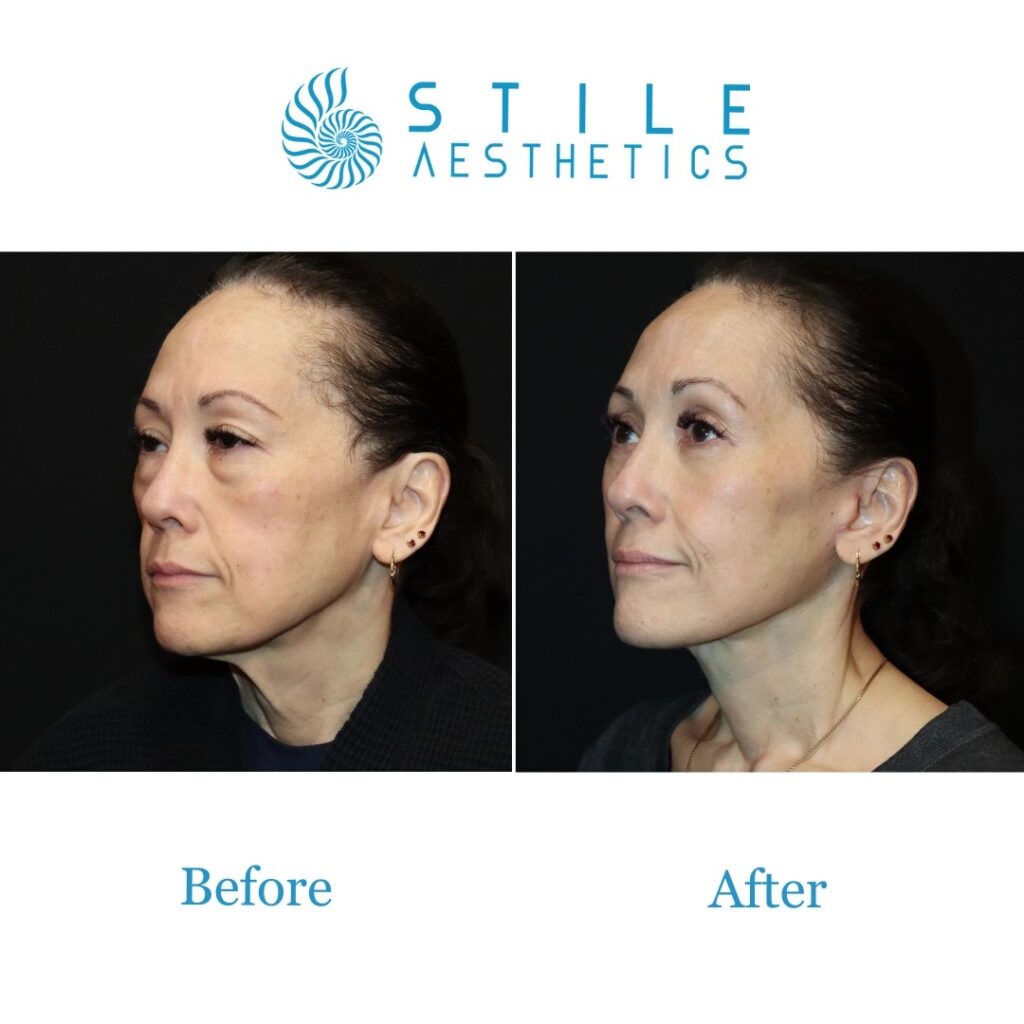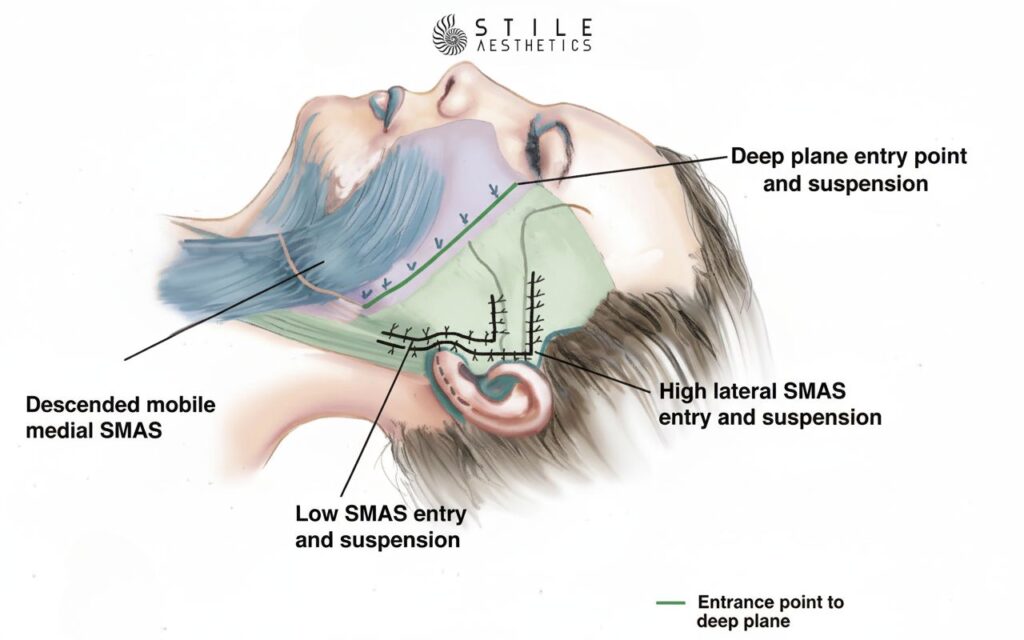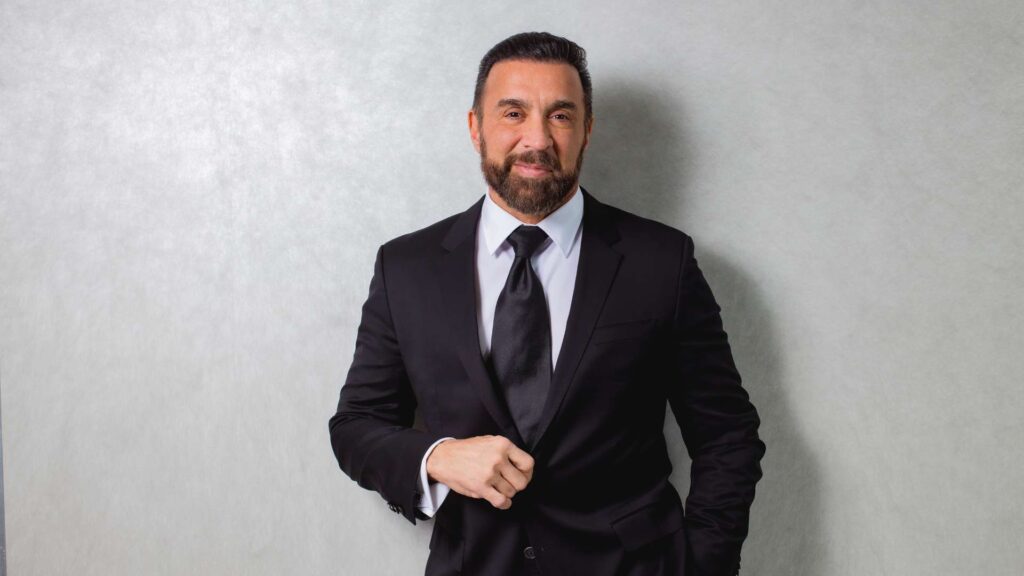Deep Plane Facelift Reviews vs. Traditional Facelifts: What Patients Really Say
Deep plane facelift results endure 10-15 years or longer through deeper tissue repositioning. Patients considering facelift options frequently cite result longevity as the primary factor in their decision-making process.
Deep plane techniques lift the mid-face and jowls more substantially than traditional approaches. This method achieves more dramatic improvements while maintaining a natural appearance because the skin avoids excessive tightening. Deep plane procedures typically require general anesthesia and cost 50-70% more than traditional SMAS facelifts. Despite this higher investment, many patients select deep plane facelifts for their superior, natural outcomes and remarkable before-and-after results.
Patient reviews provide the most reliable insights into these two established facelift techniques. Real experiences reveal satisfaction rates, recovery patterns, and long-term outcomes. The evidence shows why certain patients choose deep plane approaches despite increased costs and which considerations should guide your facial rejuvenation decision.
Patient Reviews Reveal Real Satisfaction Rates Across Facelift Techniques

Real patient experiences provide the most authentic measure of facelift success. These testimonials reveal which factors drive satisfaction and which techniques deliver on their promises.
Survey Data Shows Clear Satisfaction Patterns
Both facelift approaches achieve impressive satisfaction rates, with deep plane techniques maintaining a slight advantage. Research demonstrates 94.4% patient satisfaction for deep plane procedures compared to 87.8% for traditional SMAS methods. An analysis covering over 2,000 patient reviews recorded 92.24% positive responses overall.
The most significant finding? Nearly 92% of patients rate their facelift as “worth it”. Patient satisfaction stems primarily from two elements: aesthetic outcomes (79.10%) and surgeon rapport (74.92%).
Satisfaction rates remain remarkably stable over time. Even after 12.6 years, 68.5% of patients still describe their results as very good or exceeding expectations. Most patients report feeling approximately 11.9 years younger following surgery.
Patients Prize Natural-Looking Outcomes Above All
Authentic-looking results dominate positive patient testimonials. The most praised outcomes share common characteristics:
“Most of my friends think my new look is from retiring and being less stressed!”
Preserved facial mobility receives consistent praise in patient accounts. One satisfied patient shared, “I look and feel 10 years younger,” while commending their surgeon’s skillful technique.
Patients consistently prefer appearing “refreshed” over “operated on.” Another testimonial captures this perfectly: “Most people had no idea I had a facelift, but commented on how rested I looked”.
Warning Signs From Negative Patient Experiences
Disappointing results account for 82.04% of negative reviews. The dreaded “windswept” appearance from excessive skin tightening tops the list of patient complaints.
Other common sources of dissatisfaction include:
- Visible scarring from poor incision techniques
- Frozen facial expressions
- Complications necessitating revision procedures (affecting 5-10% of cases)
Board certification and extensive facelift experience significantly reduce these complications. One patient’s advice resonates: “Do not settle when it comes to choosing a board-certified plastic surgeon”.
Technical Differences Define Each Facelift Approach

Surgical technique determines both immediate results and long-term durability. These technical distinctions shape patient outcomes and explain why certain approaches deliver superior longevity.
Deep Plane vs SMAS: Fundamental Surgical Approaches
Traditional SMAS facelifts work with the SMAS (Superficial Musculo-Aponeurotic System), the tissue layer covering facial muscles and bones. Surgeons lift and fold this layer over itself while leaving the facial ligaments intact.
Deep plane facelifts operate beneath the SMAS layer entirely, releasing four critical ligaments that anchor connective tissue and muscle. This complete mobilization creates a unified facial structure that moves cohesively. The skin remains attached to the underlying muscle layers, eliminating the overly tight appearance that can occur with other methods.
Tension application represents the most significant technical difference. SMAS techniques separate skin from muscle, placing tension directly on the skin. Deep plane procedures create tension-free skin closure because support comes from deeper muscle repositioning, leading to less visible scarring.
Facial Areas Addressed by Each Method
SMAS facelifts excel in the lower facial third, enhancing jawline definition and reducing jowls. However, this technique provides limited improvement for midface sagging or cheek descent.
Deep plane techniques address comprehensive facial areas: midface, cheeks, jowls, and neck regions. This approach effectively repositions drooping cheeks and restores youthful facial contours. The vertical lifting vector (approximately 60 degrees for patients in their sixties) produces harmonious, natural-appearing results.
Mini Facelift Outcomes: Patient Reality Check
Mini facelifts focus on skin tightening without addressing underlying structural changes. These procedures attract younger patients experiencing early aging signs.
Clinical data reveal mini facelift results typically last only 1-3 years, compared to 10-15 years for deep plane approaches. Patient reports frequently describe disappointment as initial improvements diminish rapidly.
Published research in the Esthetic Surgery Journal confirms mini facelifts rarely achieve the natural rejuvenation seen with deep plane techniques. These patients often require additional procedures, especially for lower face and jawline concerns.
Patient consensus remains clear: mini facelifts deliver mini results. Effective facial rejuvenation requires addressing the deeper structural changes that create aging.
Cost, Duration, and Recovery: What Patients Actually Experience
Price considerations shape facelift decisions as significantly as expected outcomes. Financial investment reflects both procedure complexity and long-term value.
Surgical Fees: The Reality of Facelift Pricing
Traditional SMAS facelifts typically range from $8,000 to $15,000. Deep plane procedures cost substantially more, averaging $15,000 to $25,000 nationally. This 50-70% price difference reflects extended operating times and advanced surgical complexity.
The complete cost breakdown includes:
- Surgeon’s fee: $15,000-$30,000 for deep plane vs $7,000-$15,000 for traditional
- Anesthesia fee: $1,200-$2,500
- Facility fees: $1,600-$3,100
Geographic Pricing Variations: What Patients Pay
Location dramatically affects facelift costs. RealSelf data shows patients pay average costs of $18,140 for facelifts nationwide. Major metropolitan areas command premium pricing:
- New York City: $20,917
- Los Angeles: $19,482
- Miami: $12,365
- Chicago: $17,350
Duration of Results: The Long-Term Investment
Traditional facelifts maintain their effects for approximately 7-10 years. Deep plane techniques extend this timeline significantly.
Patient satisfaction data reveals impressive longevity. After 12.6 years, 68.5% of facelift patients still rated their results as “very good or beyond expectations”. Most patients felt they appeared 10 years younger, even a decade post-surgery.
Recovery Experiences: Patient-Reported Timelines
Healing patterns vary between approaches:
- Traditional facelift: 1-2 weeks with reduced initial swelling
- Deep plane facelift: 3-4 weeks with increased initial swelling but smoother overall healing
Patients who maintain results longest share four consistent practices:
- Daily sun protection with sunscreen
- Regular exercise and balanced nutrition
- Dedicated skincare maintenance
- Tobacco and excessive alcohol avoidance
Finding the Right Facelift Surgeon Near You

Your surgeon’s selection determines the success of your facelift procedure. Experience and expertise directly influence outcomes regardless of which technique you choose.
Award-Winning Facelift Expertise Near Henderson NV
Board certification from the American Board of Plastic Surgery represents the gold standard for qualification. Henderson residents have access to exceptional care through nearby Las Vegas specialists. Dr. Frank L. Stile operates a dedicated surgical facility just minutes from Henderson. His practice maintains dual accreditation from the Nevada Department of Health and Joint Commission certification. Among private plastic surgery clinics in the area, only Dr. Stile’s practice holds both certifications.
Dr. Stile’s Distinguished Background and Patient Experience
Dr. Stile earned board certification from the American Board of Plastic Surgery. His credentials include published research in medical journals and presentations at conferences worldwide. Patients consistently praise his meticulous approach to consultation. Carmen describes her experience: “He walked me through every detail using a full presentation—so thorough and professional”. Samantha adds, “Dr. Stile was the ONLY surgeon I considered… I knew firsthand that safety and good patient outcomes are his highest priorities”.
Schedule Your Consultation at DrStileReviews.com
Your consultation begins at DrStileReviews.com. Dr. Stile personally discusses your goals and explains each procedure option during your appointment. His team’s dedication to patient care stands out consistently. Marissa notes, “Every single person I have interacted with in his establishment has been kind, supportive, helpful, and honest”. During your visit, you’ll review before and after photographs from previous facelift patients. This allows you to compare potential outcomes between deep plane and traditional techniques.
Making Your Facelift Decision
Deep plane and traditional facelifts serve different patient needs and aesthetic goals. Deep plane techniques deliver 10-15 years of results compared to 7-10 years with traditional methods. Patient satisfaction consistently favors deep plane approaches at 94.4% versus 87.8% for traditional SMAS procedures.
The choice depends on your priorities. Deep plane procedures cost significantly more but treat both the midface and the lower facial areas. Traditional facelifts address lower face concerns effectively at reduced investment. Both techniques produce natural-looking outcomes when performed by qualified surgeons.
Recovery timelines vary predictably. Traditional approaches require 1-2 weeks, while deep plane methods need 3-4 weeks but typically heal more smoothly. Patients who maintain sun protection, healthy lifestyles, and consistent skincare extend their results regardless of technique choice.
Board certification represents the minimum qualification standard. Look for surgeons with extensive facelift experience in your preferred technique. Review before and after photographs, read patient testimonials, and schedule multiple consultations. Dr. Stile’s approach exemplifies the thorough evaluation process that leads to optimal outcomes aligned with your facial structure and aesthetic objectives.
Time to Schedule Your Consultation
Your path to facial rejuvenation starts with expert guidance. Contact Dr. Stile’s practice to discuss which facelift technique suits your goals and determine the approach that will deliver the natural, refreshed appearance you seek.
Take the Next Step
If you’re considering a deep plane facelift and want to know if it’s the right procedure for you, scheduling a consultation with Dr. Frank L. Stile is the best first step. During your visit, Dr. Stile will listen to your concerns, explain the benefits of a deep plane facelift, and outline the natural, long-lasting results you can expect.
To begin, simply fill out the form on this page and a member of our experienced team at Stile Aesthetics will reach out promptly. You can also call our office directly at (702) 551-6603 to schedule your consultation.
Choosing a double board-certified plastic surgeon like Dr. Stile ensures you receive advanced expertise, exceptional care, and results that look both youthful and natural.
Stile Aesthetics proudly serves patients in Las Vegas, NV, Summerlin, Henderson, and surrounding areas.
Individual results may vary.
Key Takeaways
Understanding the differences between deep plane and traditional facelifts helps you make an informed decision about facial rejuvenation surgery based on your goals, budget, and desired longevity.
• Deep plane facelifts last 10-15 years versus 7-10 years for traditional SMAS facelifts, with higher satisfaction rates (94.4% vs 87.8%)
• Deep plane procedures cost 50-70% more ($15,000-$25,000) but address midface and lower face comprehensively versus traditional facelifts targeting mainly the lower third
• Recovery differs significantly: traditional facelifts require 1-2 weeks while deep plane approaches need 3-4 weeks, but often yield smoother healing
• Natural-looking results depend more on surgeon expertise than technique – choose a board-certified plastic surgeon with extensive facelift experience
• Patient satisfaction stems primarily from esthetic results (79%) and surgeon bedside manner (75%), with 92% considering their facelift “worth it”
The key to successful facelift outcomes lies in selecting the right technique for your specific aging concerns and finding a qualified surgeon who can deliver natural-looking results that align with your aesthetic goals and lifestyle.
Deep Plane Facelift Vs. Traditional Facelift FAQs
What is the main difference between a deep plane facelift and a traditional facelift?
The main difference lies in the surgical technique. A deep plane facelift works beneath the SMAS layer, releasing key facial ligaments for more comprehensive rejuvenation. Traditional facelifts primarily involve tightening the SMAS layer without releasing these ligaments.
How long do the results of each facelift technique typically last?
Deep plane facelift results typically last 10-15 years or longer, while traditional facelift results generally last 7-10 years. The longevity of results can vary based on individual factors and lifestyle choices.
What are the cost differences between deep plane and traditional facelifts?
Deep plane facelifts are generally more expensive, ranging from $15,000 to $25,000 nationally. Traditional SMAS facelifts typically cost between $8,000 and $15,000. The price difference reflects the greater complexity and longer operating times of deep plane procedures.
How do recovery times compare between the two techniques?
Recovery time for a traditional facelift is usually 1-2 weeks with less initial swelling. Deep plane facelifts typically require 3-4 weeks of recovery with more initial swelling but often result in smoother healing.
What should I look for when choosing a facelift surgeon?
Look for a board-certified plastic surgeon with extensive experience in facelift procedures. Review before and after photos, read patient testimonials, and schedule consultations to discuss your goals. The surgeon’s expertise and your comfort level with them are crucial factors in achieving satisfactory results.
What are the pros and cons of a deep plane facelift?
The deep plane facelift offers several advantages, including more natural-looking results and a longer-lasting effect compared to traditional facelifts. However, some cons include the potential for nerve injury, longer recovery time, and the risk of swelling and bruising. It’s essential to weigh these factors carefully when considering a facelift.
How does a deep plane facelift differ from traditional facelifts?
A deep plane facelift focuses on lifting the underlying facial structures rather than just the skin, providing a more natural and enduring result. This technique addresses sagging skin while minimizing tension on the surface, which can lead to a more youthful appearance without the unnatural look sometimes associated with traditional facelifts.
What should I expect during the recovery from deep plane facelift surgery?
Post-op recovery typically involves swelling and bruising, which can last for up to 2-3 weeks. Patients may experience tightness and some degree of discomfort, but actual pain is usually manageable with prescribed narcotics. It is essential to follow your surgeon’s instructions for the best recovery experience.
How skilled should my surgeon be for a deep plane facelift?
Choosing a skilled surgeon is crucial when considering a deep plane facelift. Look for a highly respected facial plastic surgeon who specializes in this procedure and has a proven track record of success. Their level of expertise can greatly influence the results you see in the mirror.
What are the chances of nerve injury during a deep plane facelift?
While nerve injury is a potential risk with any facelift procedure, a skilled surgeon can minimize this risk through precise techniques. Discussing nerve concerns during your consultation can help you understand how your surgeon plans to protect these vital structures during the deep plane facelift procedure.
How long does it take to see the best results after a facelift?
Many patients start to see improvements in their appearance within 10 days post-op, but the final results of a deep plane facelift can take several weeks to fully manifest. Most of the swelling and bruising will subside within 2-3 weeks, revealing a more youthful face and neck.
Are there specific things to consider prior to a deep plane facelift?
Before undergoing a deep plane facelift, consider your unique needs, lifestyle, and the potential risks involved. It’s crucial to have an in-depth consultation with your surgeon to discuss your goals and any concerns, which helps tailor the procedure to achieve the best results.
What is the role of a neck lift in a deep plane facelift?
A neck lift can be incorporated into the deep plane facelift procedure to enhance the overall outcome, addressing sagging skin and excess fat in the neck area. This combination can significantly improve the appearance of both the face and neck, creating a harmonious and rejuvenated look.

